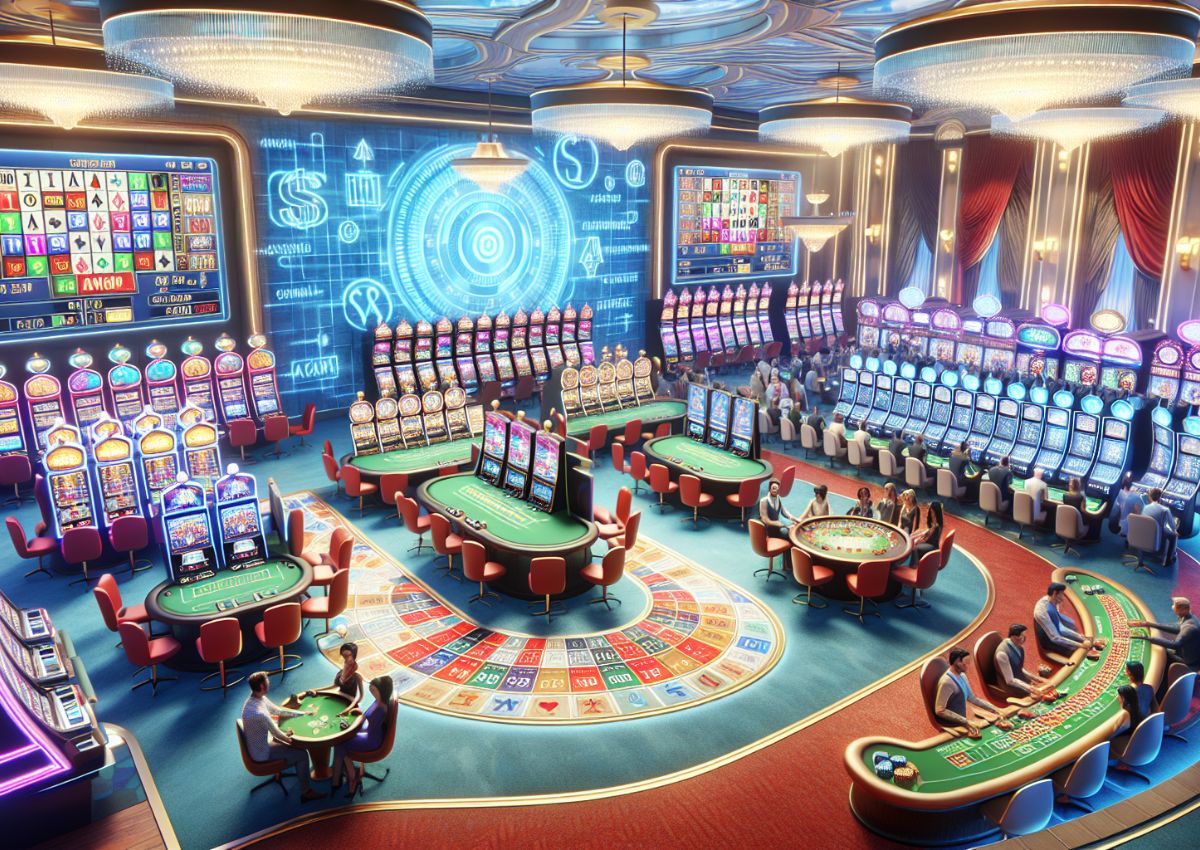The Psychological principles Behind Casino Game Design

Gambling games have long captivated the human imagination, drawing participants into a world filled with fortune, tactics, and the allure of thrill. Each activity is meticulously crafted not just for entertainment, but also to elicit targeted emotional responses that keep gamblers engaged and interested. Understanding the reasons behind these designs reveals much about how psychology plays a vital role in the gaming experience.
From the dazzling lights and lively sounds to the intricate layering of rules and payoffs, casino games are designed to create an atmosphere of thrill and anticipation. Game designers leverage behavioral strategies to influence player behavior, whether through the use of winning opportunities, close-call situations, or social connections. no verification casinos UK By examining these aspects, we can better appreciate how casino games fulfill not just a need for entertainment, but more profound psychological needs for thrill and risk.
Comprehending Player Behavior
Casino games are crafted with a profound comprehension of player psyche, which is crucial for drawing in and holding players. The thrill of the game, combined with the hope of winning, creates a powerful draw. Game designers make use of elements like sound effects, vibrant graphics, and engaging gameplay to capture attention and elicit emotional responses. These sensory experiences enhance the total environment, making players feel more invested in the game.
Another significant aspect of player behavior is the idea of risk and reward. Casino games often weigh high-stakes situations with the potential for substantial rewards, which can lead to the phenomenon known as near-miss experience. When players come within reach to winning, the brain produces dopamine, bolstering their behavior and prompting them to persist playing in pursuit of that elusive win. This cycle of anticipation and frustration plays a crucial role in how games are constructed and marketed.
Lastly, community aspects also play a critical role in player behavior at casinos. Many games are made to be played in groups or alongside other players, fostering a sense of belonging and shared experience. The interaction inherent in games like poker enhances enjoyment and can culminate in prolonged gaming periods. Designers leverage on this by creating environments that invite players to stay, socialize, and return, making the overall casino experience more appealing.
The Role of Imagery and Sound
Imagery and sound play a vital role in improving the gambler’s experience within gambling games. Designers utilize bold colors, eye-catching graphics, and captivating animations to capture players’ attention and sustain their interest. The use of motifs, such as exploration or opulence, helps create an engaging atmosphere that transports players into a different world. By connecting to the senses, these elements contribute to a intensified emotional response, prompting players to interact more profoundly with the games.
Sound design is equally important in enhancing the experience of casino games. The combination of background music, sound effects for successful combinations, and environmental noises creates an auditory landscape that holds players fascinated. Sounds associated with wins, such as ringing bells or festive music, evoke feelings of excitement and reward, encouraging players to continue playing. These sound cues are carefully placed to enhance the thrill of the game and create a more engaging experience.
Additionally, the alignment of imagery and sound is important for reinforcing the game’s overall concept and mood. Each element should coordinate harmoniously to create a cohesive experience that pulls players in. The effective use of this integration not only enhances user satisfaction but also boosts the chances of repeat play, as players become more invested in the captivating world that the casino games offer. This thoughtful integration of visuals and sound ultimately enhances player engagement and commitment.
Incentive Systems and Participation
The design of gambling experiences heavily relies on incentive systems to ensure participants involved and returning for more. These structures are based in psychological theories that take advantage of human behavior and motivation. Players are often driven by the excitement of success, which is supported by immediate feedback through the game structure’s design. This prompt satisfaction not just enhances the overall experience but also cultivates a feeling of success, encouraging participants to keep participating in hopes of greater rewards.
Casinos implement various reward structures, including jackpots, bonuses, and multipliers, to captivate participants. These elements create a level of excitement that sustains interest. Additionally, the randomness of outcomes plays a crucial role in sustaining attention. The intermittent reinforcement schedule, where wins are unpredictable but occur often enough, keeps players on edge and motivated to continue participating. This cycle of anticipation and expectation is foundational to the effectiveness of casino games.
Moreover, social elements, such as competitive events and collaborative options, boost the engagement factor by tapping into the desire to compete of players. The communal aspect of gaming with fellow participants can intensify the thrill of winning and create a sense of community within the gaming space. By combining these social dynamics with efficient incentive structures, casino games not only provide fun but also nurture a deeper bond among participants, solidifying their loyalty to the overall experience.
